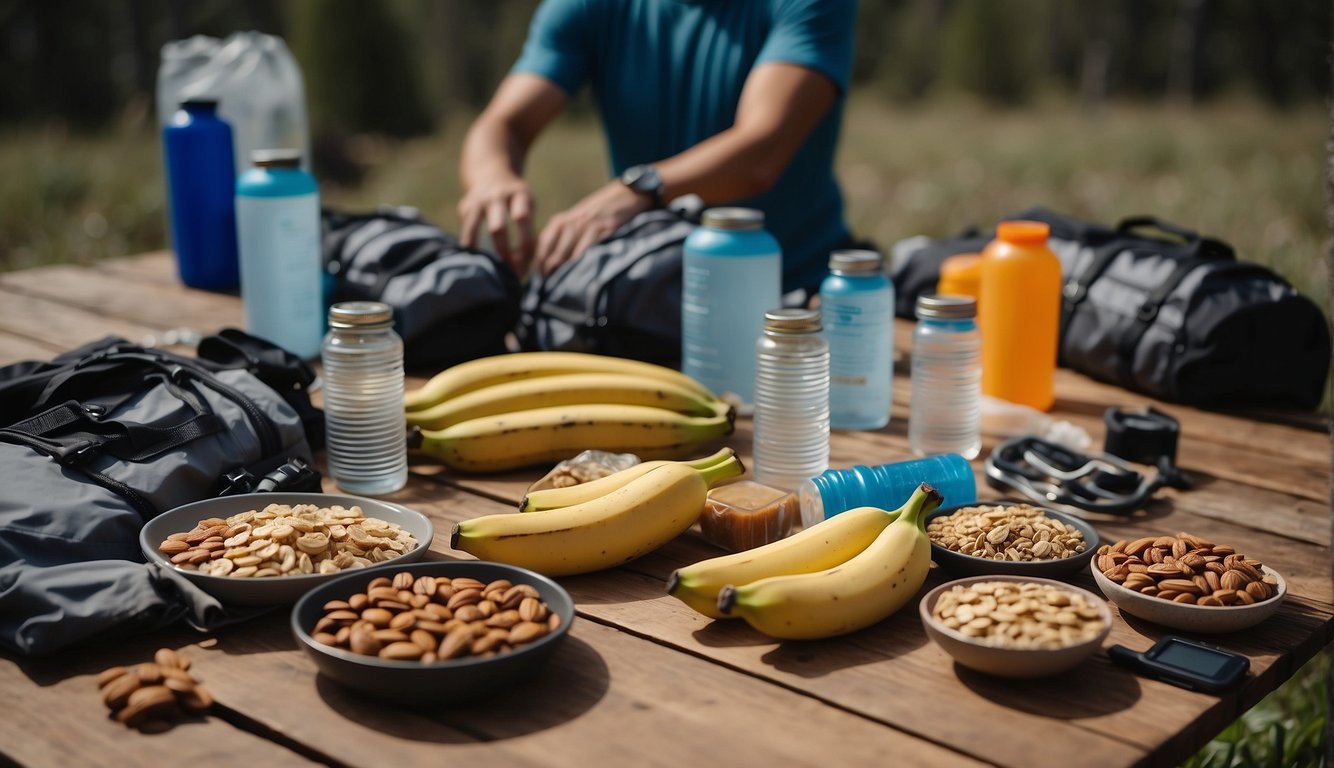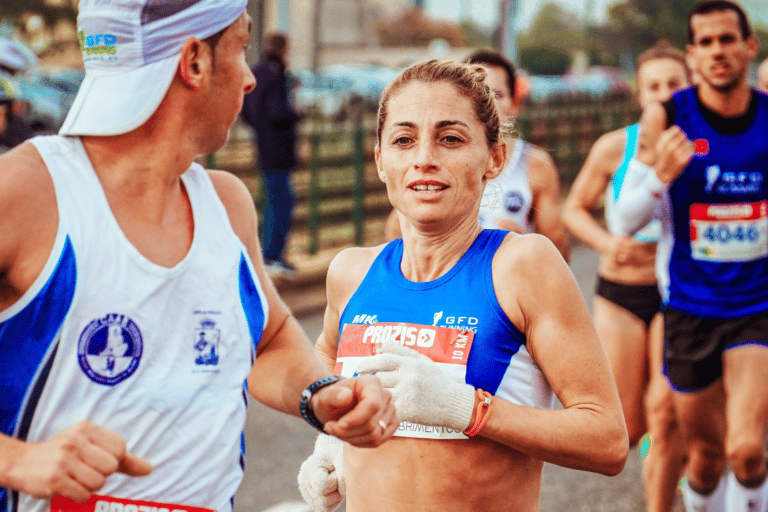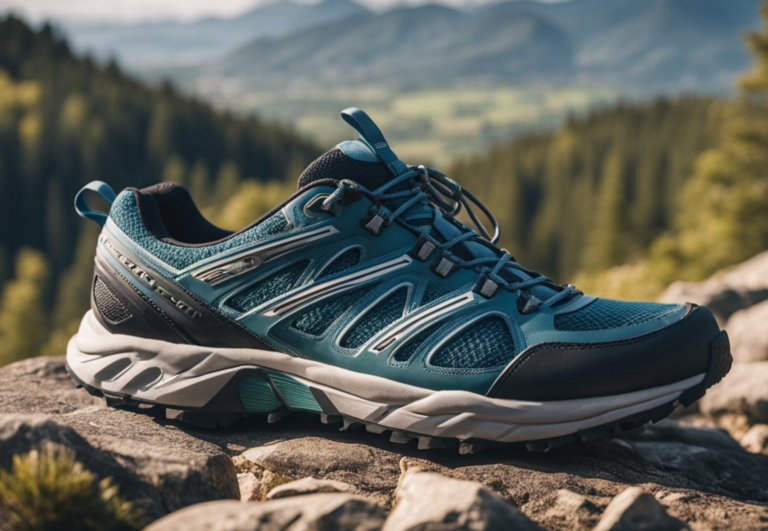Nutrition and Hydration for Trail Runners: Essentials for Endurance
Proper nutrition and hydration are vital for trail runners seeking to maximize their performance and enjoyment on the trails. As a running coach, I emphasize the importance of a balanced diet that includes a mix of carbohydrates for energy, proteins for muscle repair, and fats for longer-lasting fuel. The night before a long run, it’s important to consume a meal with about half your plate comprised of carbohydrates, supplemented with protein and vegetables to gear up your body’s energy reserves.
When it comes to hydration, starting a run well-hydrated is crucial. I advise runners to drink 12 to 16 ounces of water about an hour or so before starting a run to ensure they begin with a full tank. This practice not only prevents dehydration but also helps maintain a runner’s endurance and cognitive function, reducing the chances of fatigue.
On the trail, your body needs ongoing fuel to maintain energy levels. A combination of easy-to-digest carbohydrates should be consumed regularly to avoid dips in energy. From personal experience and training others, I’ve seen that most trail runners can process about 150 to 300 calories per hour from carbohydrates. The right balance among nutrition, hydration, and energy expenditure allows trail runners to maintain pace and stamina for the long haul.
Fundamentals of Trail Running Nutrition
In trail running, having a nutrition plan that effectively balances macronutrients and micronutrients is crucial to optimize energy levels and performance.

Understanding Macronutrients
Carbohydrates are the primary energy source for trail runners, as they fuel the glycogen stores that the body taps into during prolonged physical activity. A balanced meal for a trail runner should consist of about 50% carbohydrates.
Common sources include fruits and whole grains. Fats should also be a part of the nutrition plan, but intake should be balanced as they are more difficult to digest during runs. Foods like nuts, seeds, and olive oil are excellent sources of healthy fats. Proteins are essential for muscle repair and recovery. Nut butters are an example of a protein-rich food that’s also high in healthy fats.
Carbohydrates Table
| Source | Carbohydrate Type |
|---|---|
| Fruits | Simple |
| Whole grains | Complex |
| Vegetables | Complex |
Proteins and Fats Table
| Source | Nutrient Type |
|---|---|
| Nut butters | Proteins/Fats |
| Seeds | Fats |
| Olive oil | Fats |
The Role of Micronutrients
Micronutrients, including vitamins and minerals, are vital for a wide range of bodily functions that impact trail running performance. Adequate intake of micronutrients ensures proper energy metabolism, healthy immune function, and efficient muscle contractions.
Trail runners often overlook these, but including a variety of fruits and vegetables in their diet can cover the needs for these essential nutrients. An emphasis on colorful plant-based foods can serve as a guide for micronutrient diversity.
Micronutrients List
- Vitamins: B vitamins for energy metabolism, Vitamin D for bone health, and antioxidants like Vitamin C and E for tissue repair and immune support.
- Minerals: Calcium and magnesium for bone health and electrolytes like sodium and potassium to prevent cramping and balance hydration levels.
Hydration Strategies for Trail Runners
Hydration is critical for trail runners to maintain performance and health. My experience has shown that a personalized approach to hydration helps maintain fluid balance, maximizing endurance and minimizing risks.
Assessing Individual Sweat Rate
To tailor your hydration plan, start by determining your sweat rate. This is essential for understanding how much water you should replace during your runs. Weigh yourself before and after a run, noting the difference, and account for any fluids consumed during the run. Here’s a simple method:
- Pre-Run Weight: Weigh yourself right before running.
- Post-Run Weight: Weigh yourself immediately after running.
- Weight Difference: Subtract your Pre-run weight from your Post-run weight.
The weight lost is primarily fluids, and you should aim to replace that after your run, especially in varying temperatures and climates.
Optimizing Electrolyte Intake
Electrolytes, including sodium, potassium, and magnesium, are lost through sweat and must be replenished to maintain fluid balance.
Consider your electrolyte needs especially when running in hot climates where sweat loss increases. Sports drinks can be effective, but I recommend using them sparingly and focusing on electrolyte-rich foods. Here are key electrolytes to monitor:
- Sodium: Critical for fluid balance, aim for 500-700 mg after long runs.
- Potassium: Supports nerve function, ingest 300-400 mg post-exercise.
- Magnesium: Aids muscle function, target 100-150 mg after your run.
Remember to not only rely on thirst; drink at regular intervals during your run.
Choosing Hydration Gear
Selecting the right hydration gear can affect fluid intake efficiency and comfort. Here’s a quick guide to help:
- Water Bottles: Good for short runs. Easy to carry and refill.
- Hydration Packs: Ideal for longer distances. More fluid capacity and hands-free.
- Hydration Belts: A balance between the two. Convenient for moderate runs.
Make sure to choose BPA-free materials and clean your gear regularly to prevent bacterial growth. Depending on run length and sweat rate, calculate how much liquid your chosen gear should carry.
Pre-Run Preparation and Fueling

Before you head out on the trail, it’s crucial to focus on what you eat and drink. Properly planned pre-run fueling can enhance your endurance, and hydration maintains your performance throughout the run.
Timing and Composition of Pre-Run Meals
I recommend eating a balanced meal 2-3 hours before your run to allow for digestion. Your meal should consist of around 50-60% carbohydrates, as they are your primary energy source. Include moderate protein and low-fat content to prevent any stomach distress.
- Carbohydrates: Opt for complex carbs like whole grains or sweet potatoes.
- Proteins: Include lean proteins such as chicken breast or tofu.
- Fats: Keep these minimal; a small amount of nuts or avocado will suffice.
Selecting Quick Energy Sources
Sometimes you need an immediate energy boost just before or during a run. For this purpose, simple carbohydrates that are easy to digest, such as fruits, energy gels, or energy bars, are great options. These should be consumed 30-60 minutes prior to the run.
- Fruits: Bananas or apples are my go-to for a quick, natural sugar source.
- Energy Gels: Select gels with a balance of glucose and fructose for optimal absorption.
- Energy Bars: Choose bars with minimal ingredients and around 20-30 grams of carbohydrates.
Hydrate well with water or an electrolyte beverage 60-75 minutes before starting to ensure you’re adequately hydrated.
Nutrition and Hydration During Runs
When it comes to trail running, sustaining energy levels and maintaining proper hydration are crucial to performance.
Maintaining Energy Levels Mid-Run
Mid-run, I advise runners to consume carbohydrates to replenish stored carbohydrates used by muscles.
Timing is crucial; aim for 30-60 grams of carbs per hour, starting within the first 30-45 minutes of running. Products like gels and chews are designed for easy on-the-go digestion, ensuring a steady supply of energy to match your pace.
Hydration Techniques on the Move
While running, I recommend hydrating with small, frequent sips of water or a sports beverage to prevent hyponatremia, a condition caused by low sodium levels.
I counsel athletes to listen to their bodies and hydrate accordingly, which typically means drinking to thirst. A structured approach would include:
- 15-20 minutes: Sip water or an electrolyte drink
- Every 5 miles: Assess personal hydration needs based on sweat rates
Real Food vs. Processed Options
For trail runners, the choice between real food and processed options like sports nutrition products often comes down to preference and stomach tolerance.
Real foods, such as bananas or dates, can be an excellent source of natural carbohydrates and other nutrients. However, pre-packaged options like gels or energy bars are formulated to provide a concentrated and convenient energy boost and are often fortified with electrolytes and vitamins.
Post-Run Recovery Nutrition

After a trail run, it’s crucial to focus on nutrition and hydration to aid recovery. The goal is to replenish glycogen stores, repair and build muscle, and restore fluid balance.
Replenishing Glycogen Stores
Glycogen is your body’s primary source of energy for endurance activities. To replenish glycogen in my muscles, I ensure to consume carbohydrates within 30 minutes post-run. A meal or snack—like a banana with some oatmeal—works well for this purpose.
- Carbohydrates needed after a run: 1.0-1.2 grams per kg body weight
- Ideal post-run meal window: Within 30 minutes
Muscle Recovery and Protein Intake
Protein is essential for muscle repair. After my run, my muscles are primed for recovery, and a balanced intake of protein can alleviate aches and promote muscle synthesis. A good source of protein might be a chicken sandwich or a plant-based protein shake.
- Protein target post-run: 15-25 grams
- Examples of high protein snacks:
- Greek yogurt with almonds
- Grilled chicken breast
Hydration and Fluid Rebalance
Hydration isn’t just about water, it involves electrolytes like sodium lost through sweat. I start with a water bottle and often include an electrolyte solution right after my run.
- Initial hydration goal: 500ml water within the first 30 mins post-run
- Ongoing hydration: Drink every 5-10 mins until thirst is quenched
Note: To counter dehydration, replace 1.5 liters of water for every 2 pounds of body weight lost during the run.
Special Considerations for Trail Runners
As a trail runner, mastering nutrition and hydration pivots not only on the basics but also on adapting to varying conditions and event demands. It’s about balancing energy, managing hydration, and ensuring peak performance without succumbing to cramps or nausea.
Adapting Nutrition to Environmental Conditions
Environmental conditions on the trail can swing from one extreme to another. High altitude calls for increased carbohydrate intake, as colder climates require more energy for warmth and in hot conditions, focus must be placed on electrolyte replenishment to prevent cramps.
Recommended is a fluid intake of 12 to 16 ounces 60 to 75 minutes before running to begin with a “full tank.”
- Hot Conditions:
- Drink an electrolyte beverage to combat excessive sodium loss.
- Consume easily digestible carbohydrates for quick energy.
- Cold Conditions:
- Focus on dense energy sources like nuts and seeds.
- Maintain hydration despite reduced thirst response.
Nutrition for Long-Distance Events
For events stretching beyond 90 minutes, plan your nutrition carefully to avoid a caloric deficit which can impair both performance and recovery. A balance of approximately 50% carbohydrates, with the remainder split between proteins and fats the night before, is recommended for sustainable energy.
- During the Event: Aim for 150-300 calories per hour from carbohydrates.
- Post-Event: Prioritize recovery by establishing a meal routine high in protein and complex carbohydrates coupled with adequate sleep to facilitate muscle repair.
Note: A sports dietitian can provide tailored advice based on individual concerns such as age, gender, and specific performance goals. Remember that digestion rates can vary based on effort, body mass, and the type of food consumed.






